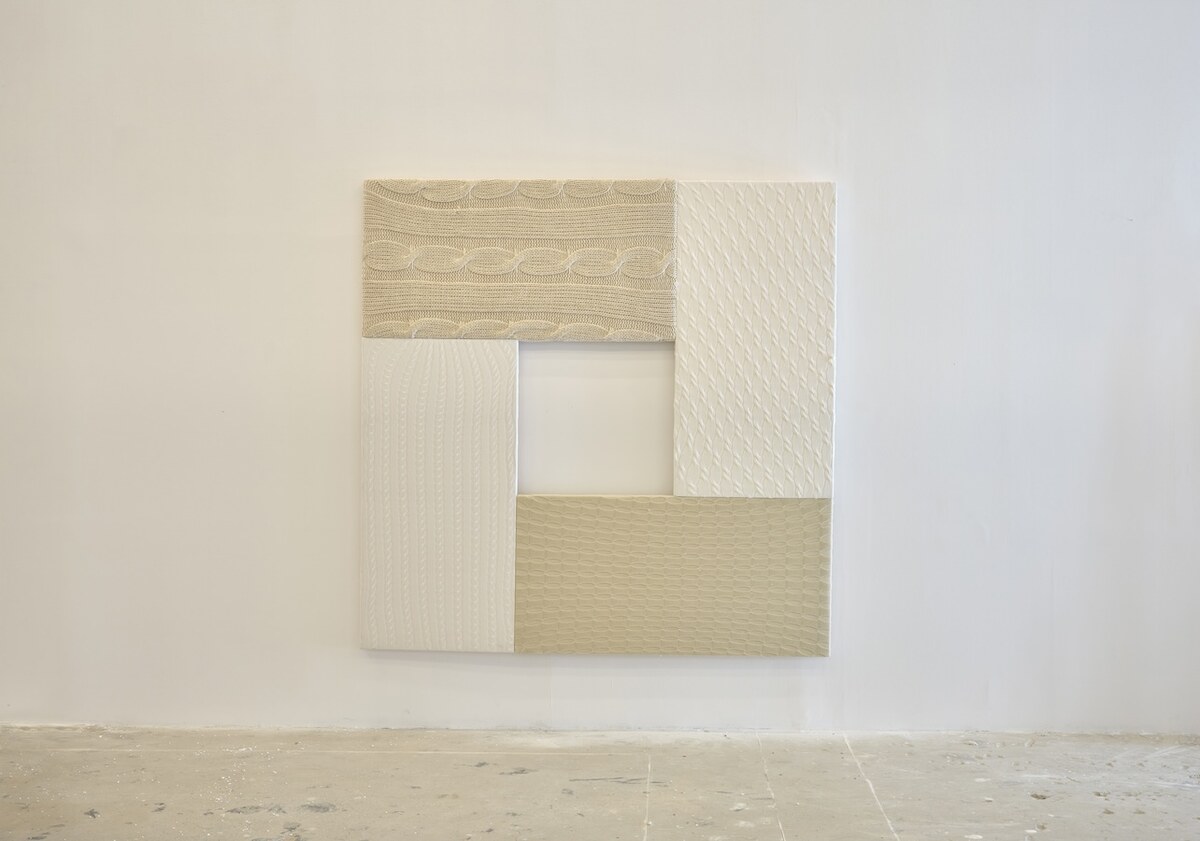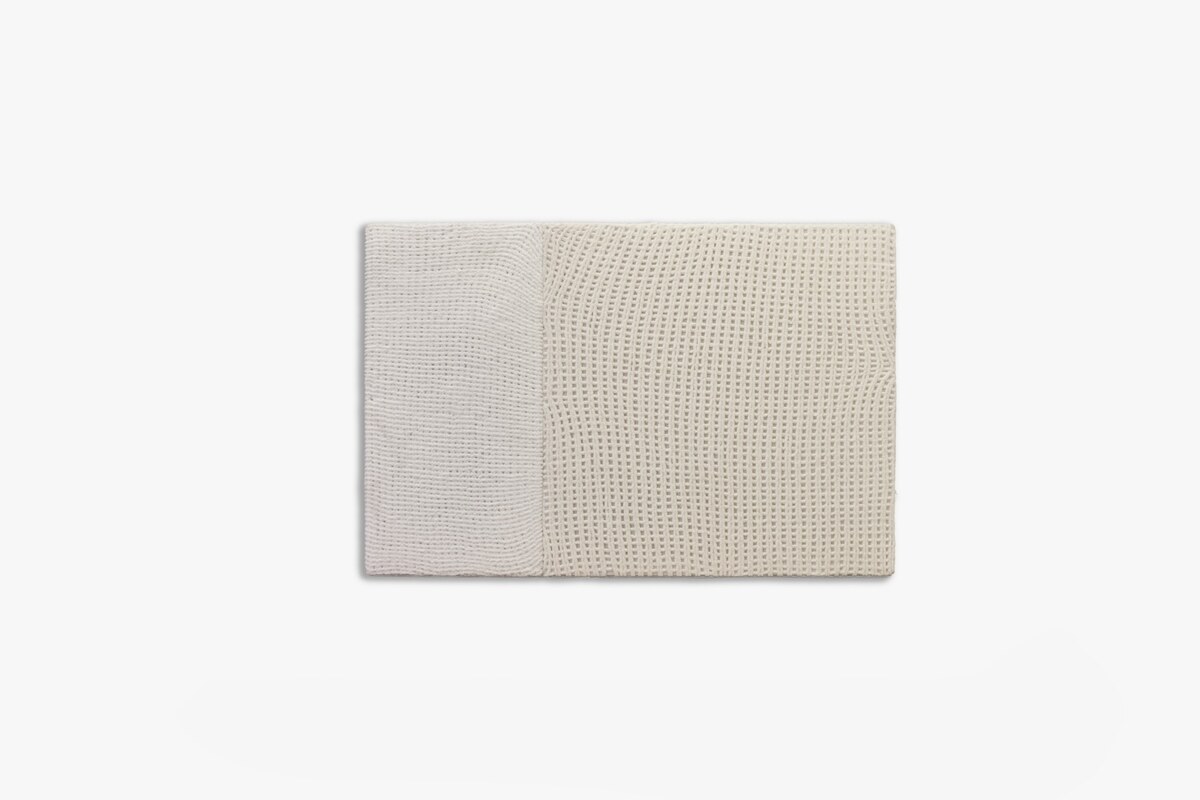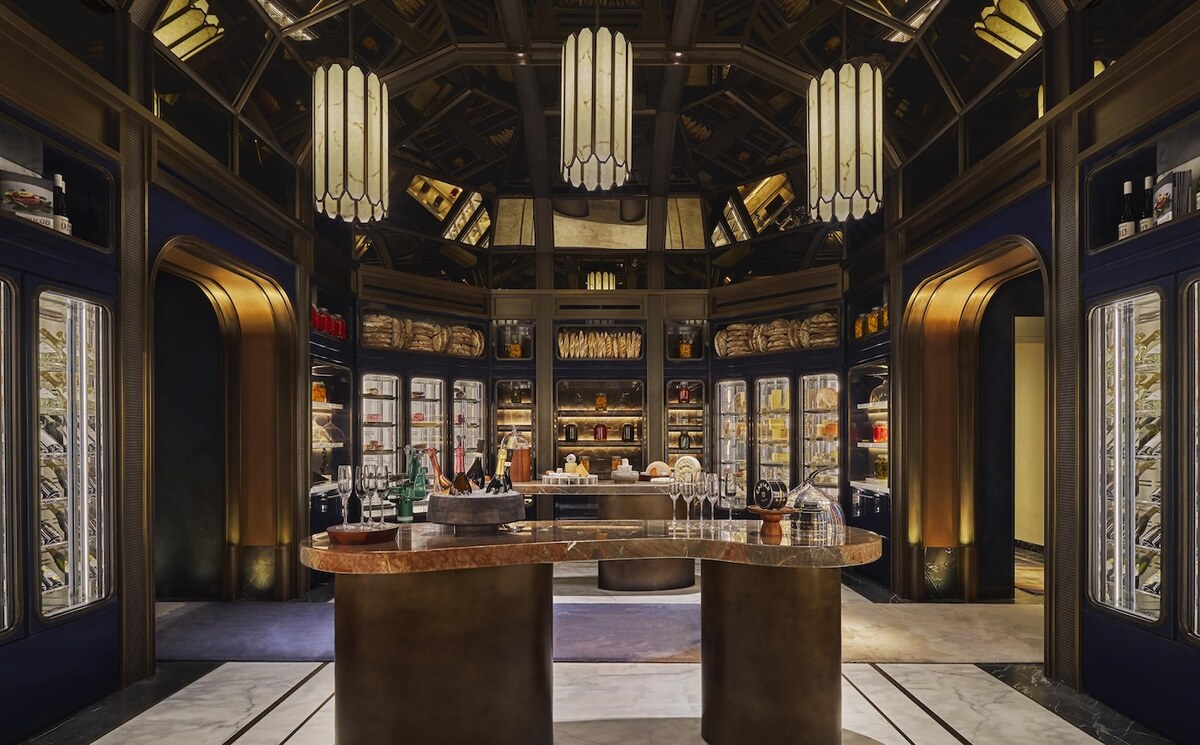JEDDAH: In his solo exhibition “Winter” at Jeddah’s Athr Gallery, the Saudi-Palestinian artist Ayman Yossri Daydban provides a compelling exploration of ihram clothing — the humble garments worn by pilgrims for the rituals of Hajj and Umrah — and how it connects to climate change.
“This exhibition is part of my Ihramat collection, which uses the ihram to highlight its significance in popular culture, religious identity, and as clothing and fabric,” Daydban tells Arab News. “The idea behind the color and material is inspired by the climate during Hajj season, the usual hot weather during pilgrimage, and how the ihram fabric is lightweight, designed for enduring the heat.”
“Winter,” he explains, refers not only to the season but also to what climate change could mean for the future of pilgrimage — suggesting that traditions once defined by their specific environmental contexts may eventually be disrupted.

Winter from the Ihramat series, 2025. (Supplied)
“White, which is symbolically associated with purity and clarity, is a color that reflects sunlight. When you think about the Hajj happening in the summer, and considering new climate realities and changes, you understand that the idea of ‘winter’ in this context is a metaphor that references the future moments when climate changes may affect pilgrimage,” Daydban says.
The exhibition, which runs until March, revisits Daydban’s iconic works from previous years, particularly “Ihramat” (2012) and “Muss” (1996), recontextualizing the material and its meanings within the lens of contemporary concerns such as climate change and the commodification of culture and spirituality.
Daydban, born in Palestine in 1966 and now based in Jeddah, is poised and calm, neatly tying together the philosophical strands of his conversation. His last name means “watchman” in Arabic, and Daydban is an insightful observer of cultural shifts and national identity. His art features in several major international collections, including the British Museum, underscoring his importance as a leading voice on identity, alienation and belonging.

Winter X, from Ihramat series, 2025. (Supplied)
In “Winter,” Daydban simultaneously weaves together and challenges traditional notions of materiality and spirituality. His use of the ihram fabric in a radically different form emphasizes the fluid nature of cultural objects. Instead of using the fabric as a garment for spiritual purification, he transforms it into everyday items, shifting their role and associations.
“The way I use the ihram fabric here is quite different from its original context—it’s more like towels or blankets, which changes the associations we have with the material,” he says. “For instance, the blankets, although made of similar fabric, are sourced from China. These blankets are available in stores and contribute to my idea of global trade and the commercial aspects of such cultural items.”
Daydban has stretched the fabric over identical rectangular wooden panels — uniform, like Muslims praying in rows — with an empty square at the center, seemingly hinting at the Kabaa. One lone piece is the invert of that, furry and full, a rectangle that one could argue fits into the void the others carry.

Winter V, From Ihramat series, 2025. (Supplied)
In his transformation of the ihram fabric, Daydban emphasizes the economic and cultural implications of how these objects move through global systems. “The materials have a significant connection to economic matters,” he says. “Although the cloths may appear similar, each has its own unique pattern and design. The variations offer a chance to explore cultural identity, to consider how these designs hold individual meaning, yet can be visually selected without awareness of their cultural background. The patterns in the cloth might be taken for granted without understanding the cultural implications behind them. This discrepancy between visual appeal and cultural awareness is key in my work.”
Through the juxtaposition of global trade and religious symbols, Daydban highlights the dissonance between the sacred and the commercial.
“What I’m trying to achieve is a reflection on beauty in the details of cultural symbols — taking a material like the ihram and transforming it into something that holds contemporary meaning,” he explains. “Through ‘Winter,’ I examine how fabric can transcend its usual associations with ritual to become a statement about today’s world. It’s a critique of how these items, which once carried deep religious significance, are now sold and consumed globally, detached from their cultural roots.”

Winter Ten. (Supplied)
The exhibition addresses how even the smallest details within the fabric can carry powerful meanings. “(It) is deeply connected to trade, materials, and economics — using the ihram as a tool to reflect on the broader systems that control these items,” Daydban says. “In terms of design, each square in the exhibition holds a specific visual and symbolic weight. Even though they may seem similar at first glance, they each possess a unique quality that highlights how even the smallest details make a difference when exploring identity.
“The show invites viewers to experience a connection between the material and the emotion it conveys, to understand how ihram is not merely a religious garment but a global symbol of cultural exchange and transformation,” he adds. “As an artist, I’m trying to make sense of how such materials are used across different contexts, with their significance becoming diluted as they move through systems of commerce.”
The idea that art can challenge the commodification of cultural symbols is central to “Winter,” with Daydban urging his audience to reconsider their understanding of material value and cultural meaning.
“I encourage viewers to reflect on this transformation and the relationship between artistic practice and commercial influence,” he says. “Take a moment to consider the process of how cultural objects are commodified and how, through art, we can bring awareness to their deeper meanings.”























